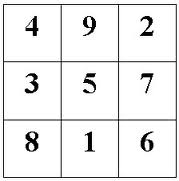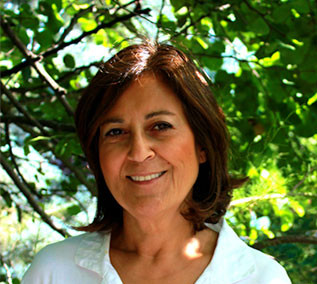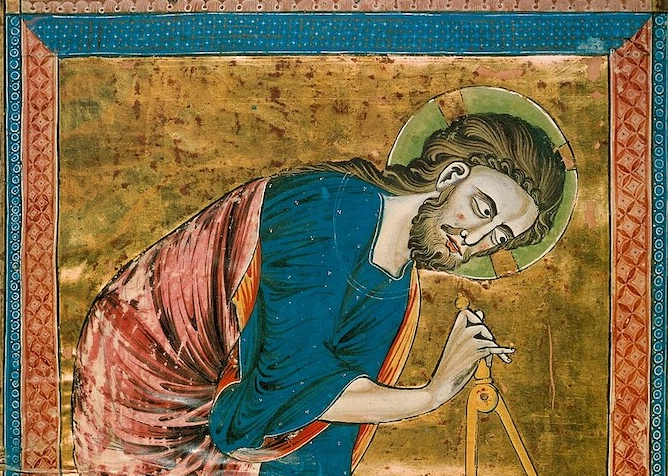
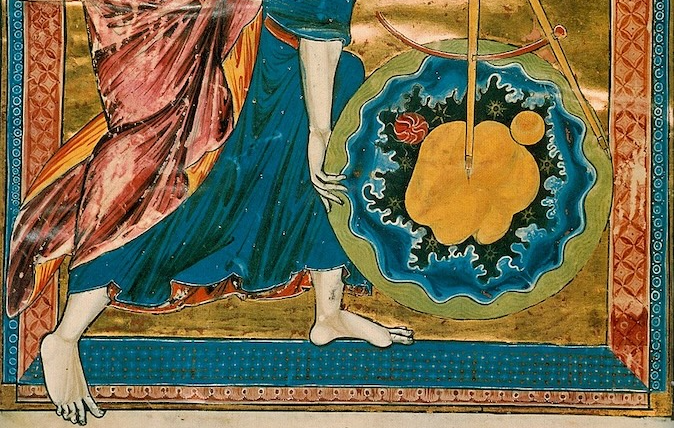
“Everything is connected to everything by secret knots.”
Numerology and number magic has fascinated humanity throughout millennia. From African tribes, American Indians, and Mayas to Mesopotamia, China and India, numbers are attributed mystery and meaning.
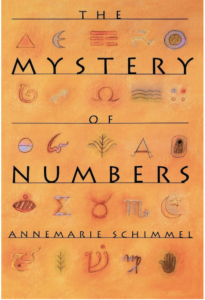
Annemarie Schimmel (1922-2003), Harvard University professor known for her vast knowledge and distinguished books on Sufism and Islamic culture, offers a rare resource in numerology with her book The Mystery of Numbers. She demystifies the meanings of numbers in the religious traditions of Judaism, Christianity and Islam with rich, at times astonishing examples, from folklore, literature, art, creed and everyday life rituals. She unravels how certain numbers bear sacred, mystical symbols, the distinction of masculine and feminine, and the auspicious numbers that are universally believed to bring plenitude.
Illuminated with images symbolizing numbers from Ancient Greece to the present, her work stands out as a rare collection of immense universal knowledge. In the introduction of the book, she wrote :
In the Jewish, Christian and Islamic cultural spheres, the interest in numbers and their meanings is based on the foundations laid by the Pythagoreans (c. 530 BC). The pillar of his theorem is order : musical order, mathematical order, the order of the cosmos and the ethical – social order. Pythagoras is said to have discovered that the intervals of the musical scale correspond to the relative lengths of the vibrating strings, which he assigned the ratios 1:2, 2:3, 3:4. Just as musical harmony could be expressed in mathematical formulas, so does the essence of everything seemed to be expressible in numbers.
Schimmel features the numbers falling between 1 to 72, and multiples of 10, which are richly represented in number symbolism. Since ancient Greece, it has been universally accepted that even numbers are divisible and feminine, and odd numbers are masculine.
Here is a selection whose mystical significance is unequivocally represented in folkloric rites, religious traditions, in art, mystical poetry and in literature across cultures.
1 : The Number of Primordial Being
The number one, the monad represents the origin of all things, said the Pythagoreans. Monad – μονάς meaning singularity refers to the Supreme being, divinity or the totality of all things. It is without a second.
The German mystic Agrippa (1486-1535) said :
The One permeates every number. It is the measure common to all numbers. It contains all numbers united in itself but excludes multiplicity. The One is always the same, and unchangeable. That is why it has itself as a product when multiplied by itself.
On the importance of 1 in all monotheistic religions, Schimmel explains :
“Yahweh teaches his prophets that there is only one God to worship. Similarly, the Islamic profession of faith claims that there is no deity save God.”
Christianity also ascribed greatest importance to the One. Paul’s Epistle to the Ephesians (4:5), hails : “One Lord, one faith, one baptism, one God, father of all. ”
On the wall of the beautiful 12th century cathedral in Monreale, Sicily, it is written :
“All life comes from the One and through the One. Adam is created by God’s breath.” Omnia ab uno .
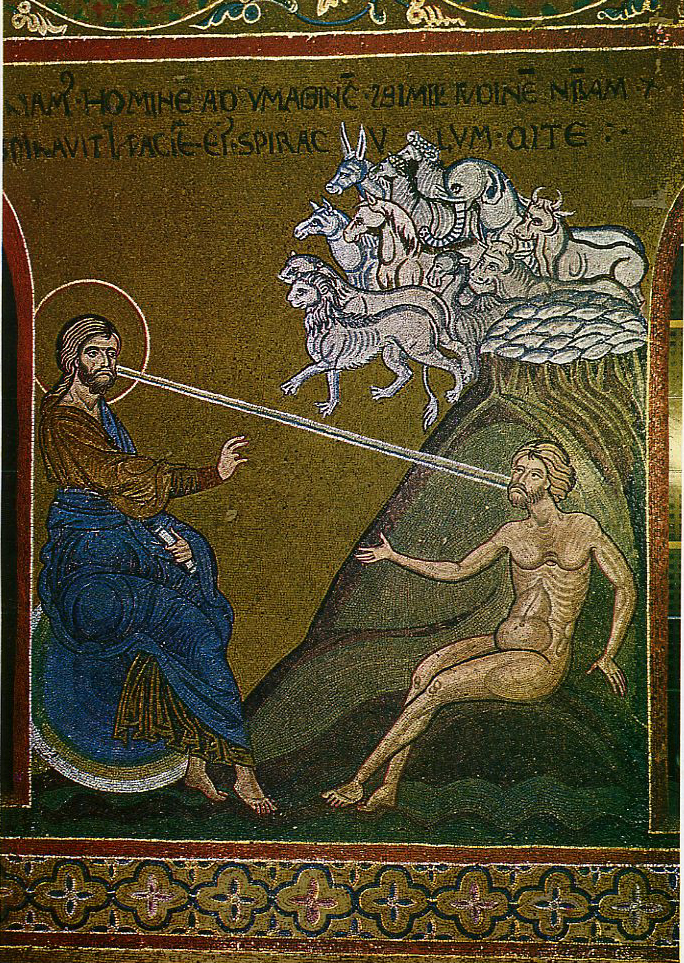
The One God is beyond all forms because forms always manifest multiplicity. He is absolute unity. To see and attain this unity behind the manifold manifestations and to reunite with the One, has always been the goal of mysticism. The Persian mystic of the ninth century, Hallaj alludes to the ecstatic state of attaining this unity in his blazing words I am the Truth ! which led to his assassination by the clergy.
The German mystic Valentin Weigel (1533-1588) expressed the mystery of 1 as the number of the deity :
I shall compare God to the first number and the creatures to the other numbers because God is one and because the creature in itself is twofold – one to itself and one to God.
For the mystic, 1 contains all wisdom and knowledge in itself. The person who has come to know One God, does not need anything more.
Ancient Chinese had a similar conviction about 1, representing the all, the perfect, the absolute, who is beyond all polarity.
2 : Polarity and Division
It represents disunion, duality. The confrontation between I and Though contains tension. Agrippa put it straight :
“2 is the number of man who is called ‘another,’ vis-a-vis God, and it is the number of the lesser world.”
Schimmel quotes the timeless poet Mevlâna Rumi, on his eloquent symbolization of duality:
Rumi compares God’s creative word kun with a twisted rope of two threads, which in English is called twine, derived from the root ‘two.’ This twisted yarn appears in all manifestations of creation but dupes only the ignorant, who are led to believe in multiplicity, while the wise know that the world of unity is hidden behind the apparent contrasts. For Rumi, the polarity is omnipresent because it is impossible to make either one absolute : the mention of ‘woman’ involuntarily includes the idea of ‘man,’ just as ‘health’ presupposes the existence of ‘sickness.’
The fundamental polarity on which life rests is found in the yin-yang of the Chinese religion. Male-female, active-passive, day-night, fire-water, etc. come into existence based on this principle.
In the Zoroastrian religion of ancient Persia, Ahura Mazda is the god of light and goodness, Ahriman is the dark evil from which the soul should be spared.
The book of Zohar mentions that duality appeared because man ate from the Tree of Knowledge, and “Thus have endangered himself.” Both the Cabalistic mystic and the Islamic Sufis allude to the creation of the world in the second letter of the alphabet b, which, in both Arabic and Hebrew has the numerical value 2.
Though duality and polarity are necessary for the continuation of life, the longing for reunion of what has been separated by the act of creation permeates most religions. Thus Goethe (1749-1832) addresses his Beloved hoping that a second word “Be!” shall not separate them for a second time.
3 : The Embracing Synthesis
“Good things come in threes !” goes the saying.
Lao-Tzu says : “ The Tao produces unity, unity produces duality, duality produces trinity and the triad produces all things.” For Dante, 3 represents the principle of love – and has synthetic power. Homer mentioned the triad of Greek gods Zeus, Athena and Apollo and their destiny-making powers.
In Christianity, the trinity represented by “Father, Son and Holy Spirit” who are personas exclusively in God. The triad of faith, hope and charity mentioned by St. Paul manifests itself throughout human life (1. Cor. 13).
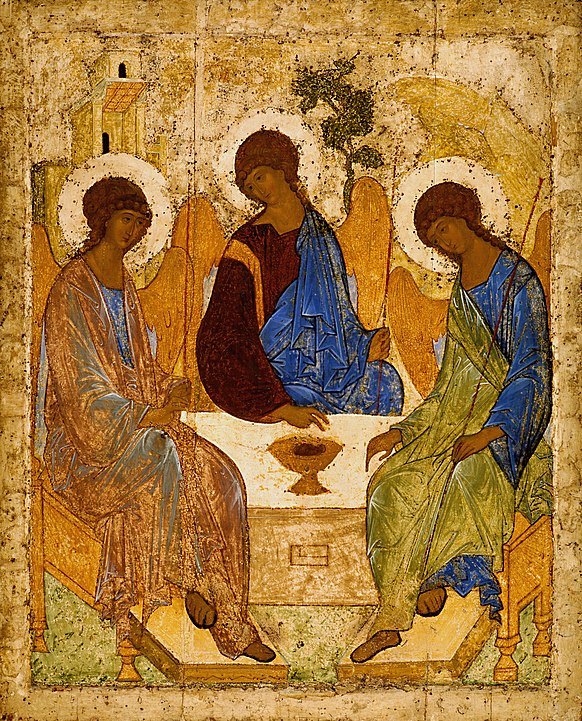
In philosophy and psychology, the 3 – time, space and causality – belong together. Spiritual activities, blessings and prayers are often performed threefold in all three monotheistic religions. According to Zohar, the world was created from 3, namely, “ wisdom, reason, and perception,” and manifested in the fathers of Abraham, Isaac and Jacob.
Oracles are based on the use of 3. Riddles are posed three times. Fairy tales often mention 3 human beings, 3 animals or 3 objects. As a general rule, the third and youngest son or daughter is, in the end, the lucky one. The hero has 3 wishes. The triangular action between hero, enemy and rescuer is frequent in life and in fairy tales. Most healing formulas should be repeated three times.
The exterior of the shaman drum is divided in 3 parts:
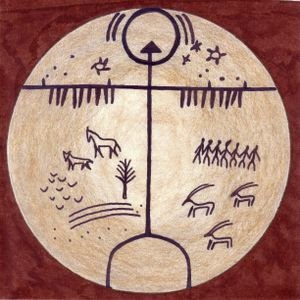
The Islamic musician and philosopher, Al-Farabi (872- 950) is said to have played 3 different tunes in his lute : one made his listeners laugh, another made them weep and the third tune put them to sleep.
4 : The number of Material Order
The earliest human beings observed the 4 phases of the moon – crescent, waxing, full, waning – which served as an organizer of time. By observing the sun, 4 seasons, the autumn, spring equinoxes and the four cardinal points were discovered, which were true for the cosmologies of Asia, Europe, Mayans and native Indians. 4 groups of creatures were given life : minerals, plants, animals and humans. 4 also represented the elements of creation – earth, water, wind and fire. Chinese built the villages according to the principle of fang, the square.
For the Pythagoreans, 4 was the ideal number, offering the form square which is perfect and self-contained.
In the Biblical tradition, the four 4 angels or cherubim holding the 4 directions represent God’s power encompassing the whole world. There are also 4 creatures of Ezekiel’s vision – the man, lion (Mark), ox (Luke) and eagle (John), seen close to the divine throne.
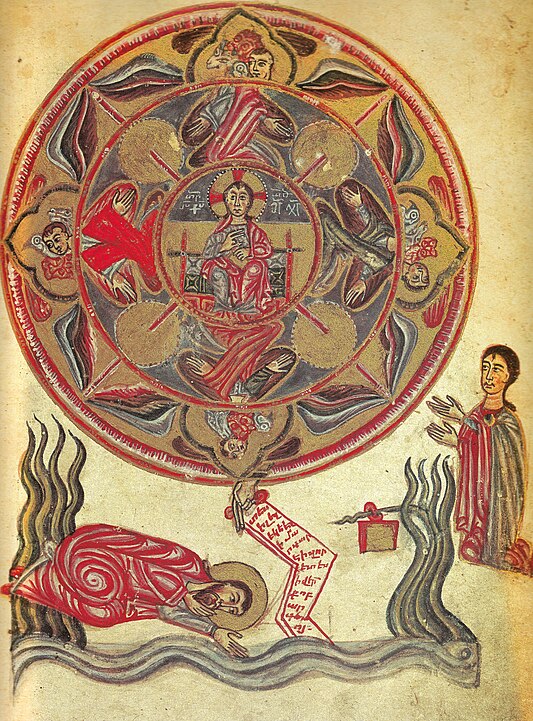
The church fathers also believed that the name Adam, written in Greek, alluded to the names of the 4 directions – anatole, dusis, arkto and mesembria; thus Adam became a representation of the fourfold cosmic world.
The relation between the cross of Christ and the four corners of the world is demonstrated in ancient Byzantine church, a square with a Greek cross inscribed in the middle.
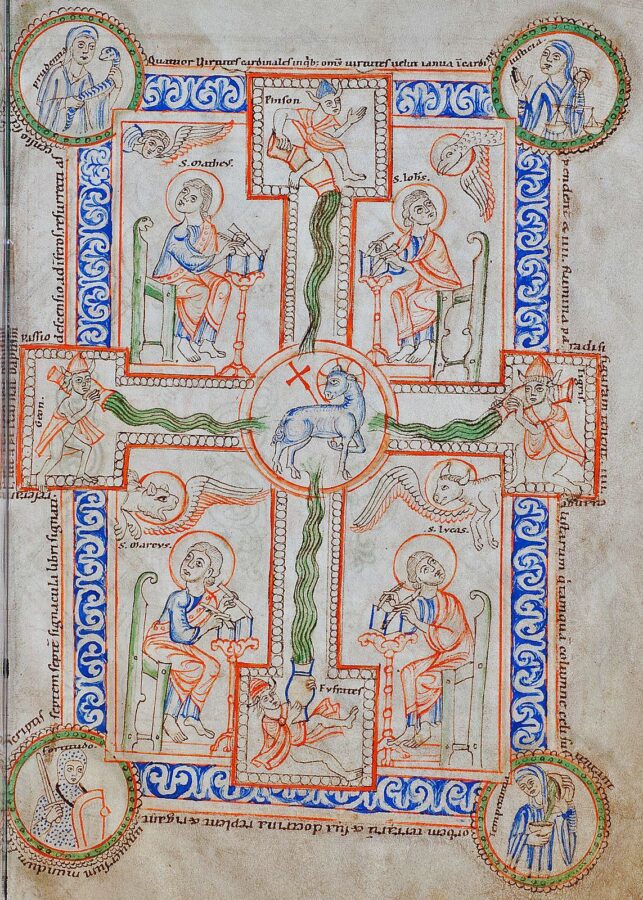
The 4 rivers of paradise were also reflected in the blissful Persian gardens which were divided by 4 canals into the so-called charbagh (4 gardens).
Cabala mentions the 4 worlds of the universe – emanation (atsilut), creation (beriah), formation (yetsirah), and the world of visible things (asiyah).
In Sufism, one has to cross 4 ascending stages – the law, the mystical path, gnostic knowledge and the truth – to approach perfection and the Divine.
5 : Number of Life and Love
5 is the first number made up of masculine 3 and a feminine 2, thus it is believed to express human life, love and the union of man and woman. Goethe refers to 5 as “ a beautiful, odd and sacred number.”
Schimmel recounts the discovery of the magic square grouped around the number 5 in the following story :
In ancient China, a just and wise emperor Yu ruled (c. 2200 BC). Confucius recounts that the emperor had once been occupied with building a dam on the Yellow River to stop the floods. While he was sitting on the bank of the river, immersed in thought, a turtle named Hi appeared to him. On the turtle’s back there was a figure with number signs which, transcribed into modern numerals looked like this :
All the horizontal and vertical lines produce the sum of 15, as do the diagonals. 5 was highly esteemed in China.
Schimmel counts 5 spiritual archangels, Michael, Seraphiel, Gabriel, Azrael, and Suriyel each with particular capacities and qualities. Revelation mentions the importance of their presence during the Last Judgement.
6 : Perfect Number of the Created World
Since antiquity 6 has been regarded as the perfect number because it is both the sum and the product of its parts : 1+2+3 and 1x2x3.
It is also the product of the first male and female numbers 2×3.
Bible states that God created the universe in 6 days. In the Old Testament, 6 is seen as a preparation for either rest or completion. 6 is significant in the Zoroastrian belief, for it represents the 6 periods of creation and 6 festive feasts are dedicated to each.
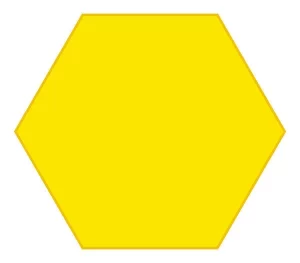
Schimmel writes that hexagon, the 6 sided polygon appears as an ideal building principle in nature, the most obvious examples being the beehive and the snowflake, whose forms have fascinated observers since ancient times. More strikingly, it appears in the molecular structure of the benzine ring, C6H6 which the chemist Kekulé discovered in a dream:

7 : Pillar of Wisdom
“The number 7 has fascinated humankind since time immemorial.”
It is said to be endowed with positive powers. In Babylonia, it represented wholeness and plenitude.
The ancient Babylonian temple ziggurat had 7 storeys, and 7 steps led to the Temple of Solomon and it was built in 7 years. The tree of life is represented by 7 branches just like the 7-branched candalebrum of Jewish ritual.
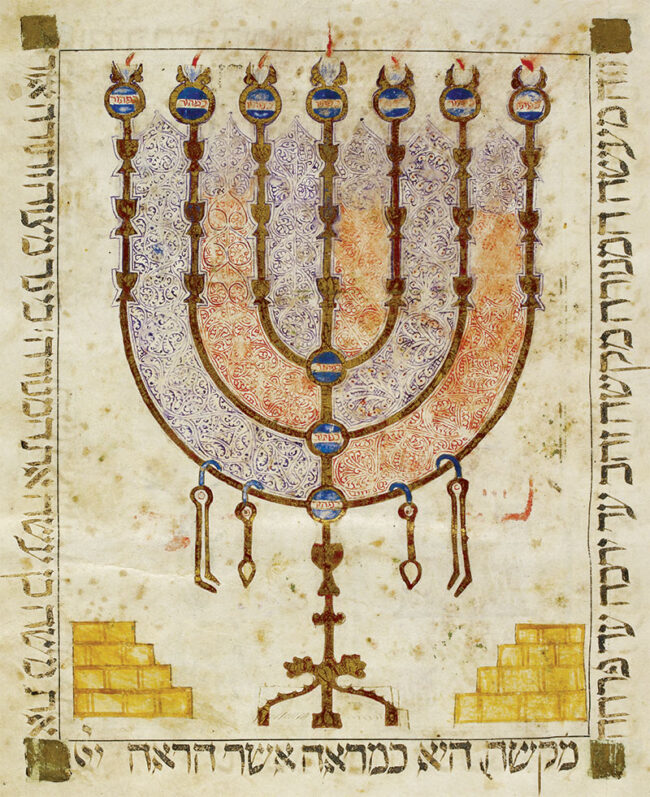
The Maya believed in a 7-layered sky, Noah’s dove stayed away for 7 days. Most great feasts last for 7 days and nights as did the periods of mourning. It is believed that the soul needs 7 units of time to free itself from the dead body. In China the rituals for the dead are made 7 times. Jacob served Leah for 7 years, and then another 7 years for Rachel ( Gen.29:18-30). Zachariah speaks of the 7 eyes of the Lord. It is alluding to God’s omnipresence which reoccurs later in Sufism as the eyes of the 7 great saints through which God looks over the world. In the Christian tradition, the Catholic mass is arranged in 7 parts. The 7 gifts of the Holy Spirit are counterbalanced by the 7 sins. 7 joys and 7 sorrows are attributed to Mary.
Since 7 is a prime number, indivisible, and neither producing nor produced, it was also related to Athena who is depicted as having sprang from the head of Zeus. She is similar only to itself and different from all others. The fact that 7 cannot procreate, it was applied to Sabbath, the seventh day on which human kind should rest and not create anything.
In ancient Persia, one had to ascend 7 skies to reach the god of perfect light – Mithra. At each ascending station, one had to leave a piece of garment which symbolized the shedding of a terrestrial-human characteristic. Only then the purified soul could be accepted to the spiritual world of perfect light. It invokes the 7 layers of purgatory and the 7 stages of the mystical path in Sufism.
In the trailblazing epic, Canticle of the Birds, the mystical Persian poet Attar (c. 1150), wrote about the journey of the soul birds who had to pass through the 7 valleys in their quest to reach the Sovereign. Saint Teresa of Avila visualized 7 interior castles to surpass on her spiritual path of perfection. Ferdowsi’s renown epic Shahnama ( Book of Kings, c. 1000) recounts the 7 heroic trials of Rustem, also alluding to the ascending phases of the soul. In the Persian New Year, Newroz that is celebrated on the spring equinox, 7 items are displayed at the festive table. In Iran, the word has it that “ to do the work of 7 mollas (religious clergymen)” means to accomplish nothing !
7 has healing powers in ancient medicine. In the teachings of Hippocrates, number 7 rules the ailments, and a cure of 7 days-doses is effective on painful ailments.
Universally considered as a number with special powers, one finds frequent use of the 7 winds, 7 chakras, Buddha’s 7-year quest for salvation, stories of the Seven Wise Masters, the 7 climata, and fairy tales with 7 dwarfs, behind the 7 mountains, and others… 7 birth places or burial sites are ascribed to poets as Homer in ancient Greece and Yunus Emre in medieval Anatolia.
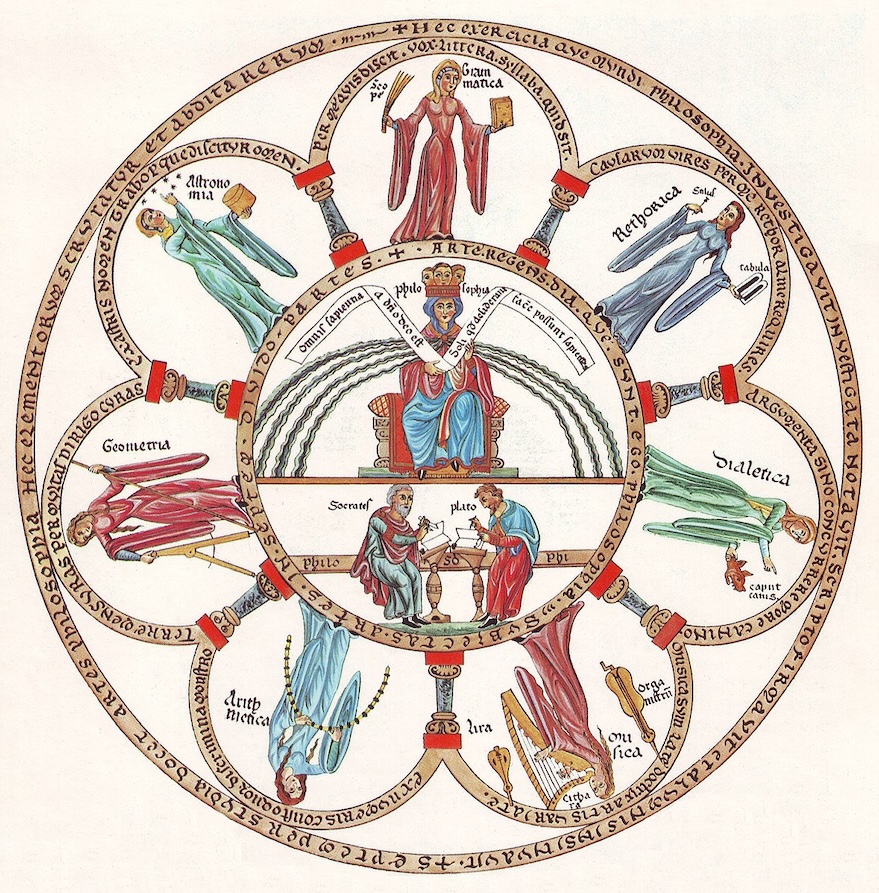
8 : Auspicious Number
In antiquity, 8 was significant for mathematical reasons. Ancient Greeks discovered that every odd number above 1, when squared results in a multiple of 8 plus 1, expressed by the formula : u²= (nx8) +1. Later, in architectural designs, octagon was used in the construction of domes.
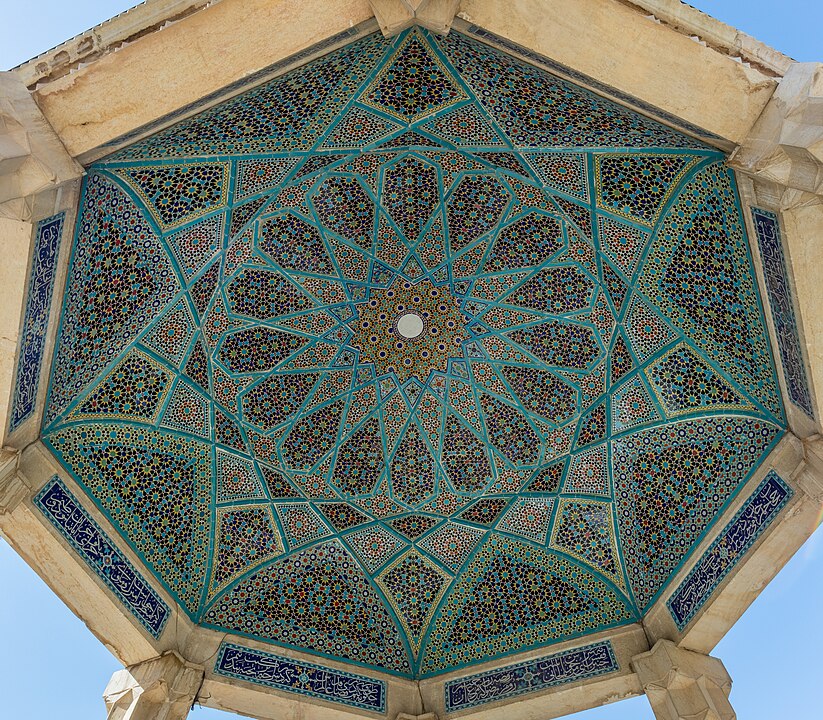
Both the 8 pointed star and the octagon was considered by the Jews and then the Christians as signs of luck. 8 appears as a new beginning after what 7 has completed and it is a day of purification and regeneration in the Jewish tradition. Resurrection of Christ was on the eighth day of Passion, thus promising future glory and eternal life to the believer.
8 is associated with the number of paradises through the ages. In India, the 8-petaled lotus represents perfection in beauty. It also represents a fundamental teaching of Buddha – the noble eightfold path of ascension which will lead to self-awakening, deliver humankind and will lead to cosmic equilibrium. In his Sermon on the Mount, Christ mentions the eight parts of the path that lead to eternal bliss.
In China 8 symbolizes good fortune and stands as a key number in the configurations of the I Ching.
9 : Magnified Sacred 3
In many traditions, 9 is connected with the spheres and planets. In Persian and Turkish mystical texts, there are 9 skies and the highest realm is found beyond and above the ninth. The shamanic cosmic tree has 9 branches. In China, the pagodas often have 9 storeys, the mythical dragon has 9 heads. The magic square engraved on the turtle’s shell had 9 parts surrounding the central 5. The whole world was considered to consist groups of 9. Beijing, built in 9 sections a millennia ago, consists of a center and 8 streets that lead there.
9 was special in ancient Greece as well. Apollo was accompanied by the 9 Muses. Feasts to honor him in Delphi were made every ninth year.
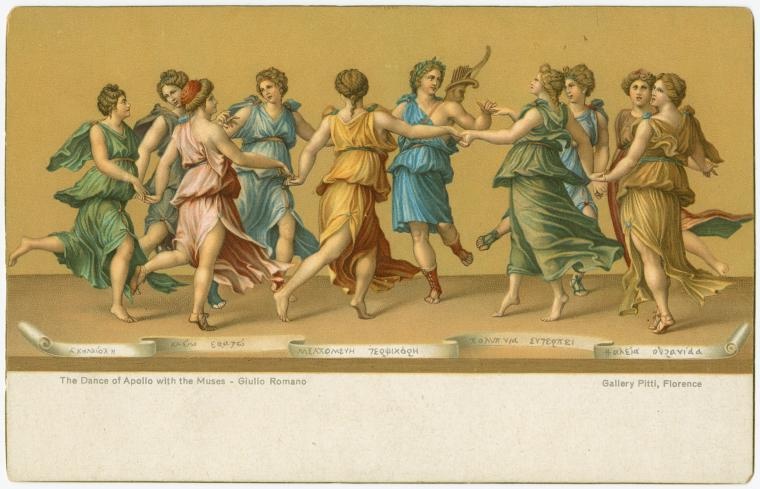
In Christian circles, 9 is generally associated with Trinity.
In Divine Comedy, the angels has 9 orders, and 9 is the number of Dante’s beloved Beatrice.
The American poet E.E. Cummings rhymes the tune of 9 :
“For every mile the feet go
the heart goes nine.”
10 : Completeness and Perfection
Most of the counting systems in antiquity are based on 10 as shown by the German polymath, W. Hartner. For the Pythagoreans, 10 contained everything as the sum of the first four natural numbers (1+2+3+4=10). Thus it carried in itself all the 4 elements. In geometry, it can be represented as the equilateral triangle. In 10, multiplicity turns again into unity.
The Greek letter iota, with which the name of Jesus begins has a numerical value of 10.
It was marked in religious traditions – the early Rigveda of India consisted of 10 books, Moses received 10 commandments, Zohar stated that the world was created in 10 words. On Rosh Hashanah, the Jewish New Year, 10 biblical verses are read in groups of 10. Cabalists assert that there are 10 archetypal manifestations which are the basis to all forms of existence.
Augustine of Hippo (354-430) stated on the essence of numbers :
All beings have shapes because they have numbers. If you take these numbers away from them, they will be nothing. For in them is as much of the essence as has been measured out.
The proverbs state that the Creator precisely measures the world according to size, number and weight :
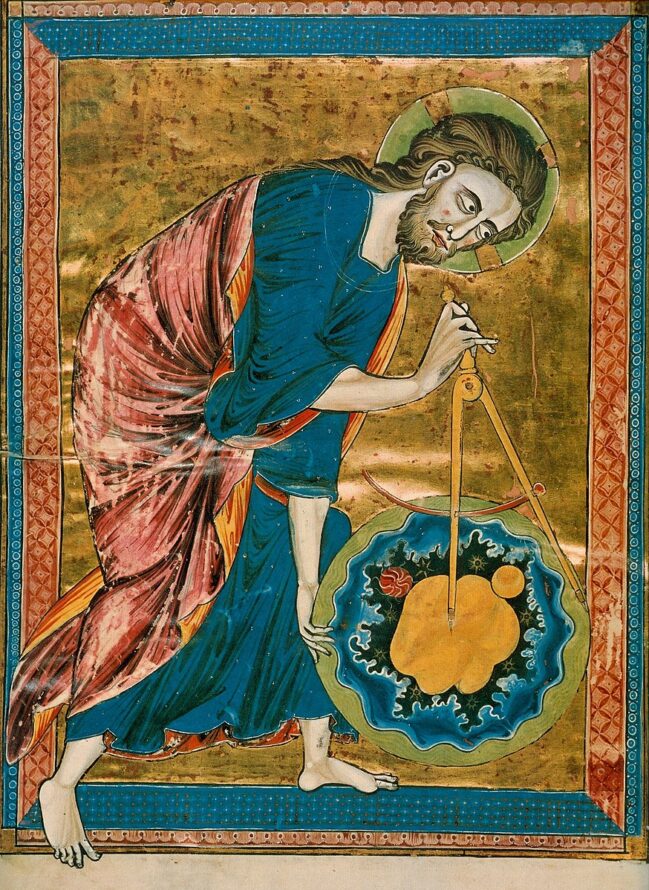
12 : Closed Circle
Many of the ancient civilisations were duodecadic – built on the basis of 12. Herodotus also mentions 12 as a counting unit. The year was divided into 12, a day into 12 hours. There were 12 gates leading to the Egyptian underworld, Christ had 12 apostles. Zodiac has 12 signs, heavenly Jerusalem had 12 gates, and Israel is said to have 12 tribes. It is believed that 12 winds influence the globe. There are 12 nights between Christmas and Epiphany.
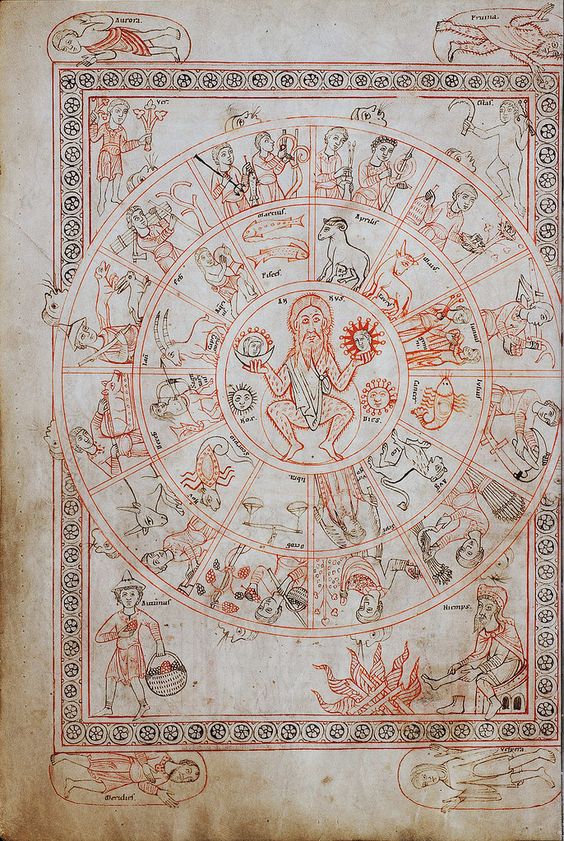
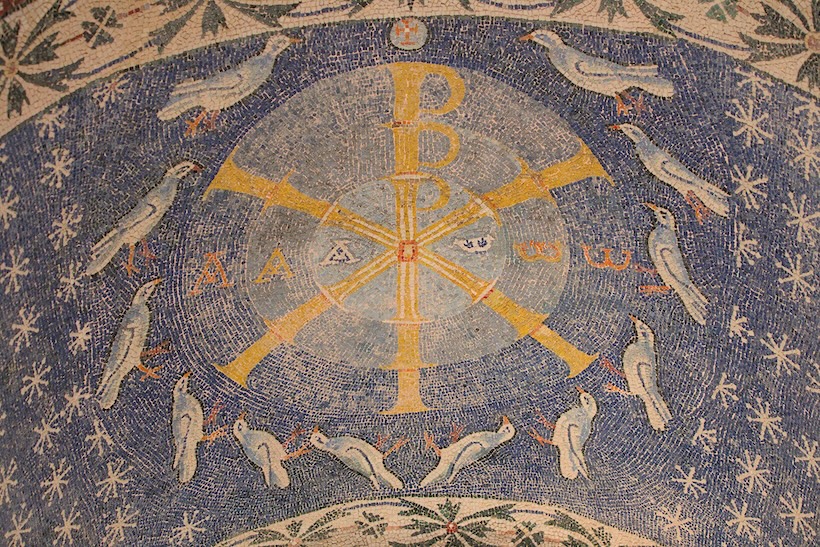
40 : Preparation and Completion
Taking 40 as the completion of a stage of life, Talmud and the Catholic church, declares it to be the “canonical age” of man, indicating a certain level of maturity and the full development of the intellect. King Solomon and David were said to rule for 40 years. In the Judeo-Christian tradition, the time of mourning is 40 days is associated with the time of morning. Noah’s flood was caused by 40 days rain.
In both Judaism and Islam, 40 days is the period of purification. The feast of Candlemas on 2 February marks the end of Mary’s confinement after the birth of Jesus. Christ rested in the tomb for 40 days.
In mystical Islam, 40 saints, each endowed with particular qualities are ascribed significant roles in governing the divine system. Celebrations like wedding feasts last for 40 days and 40 nights in Persian and Turkish folklore. The comprehensive book of the Alchemy of Happiness written by the medieval polymath and mystic Al-Ghazali (1057-1111), consists of 40 chapters, progressively preparing the human being to his maturity up to the final and the fortieth chapter when he meets his Lord at the moment of death.
The Sufi has to undergo a retreat of 40 days for meditation, purification and for attaining spiritual discoveries. The benefits of having completed 40-days retreat at least 40 times in a lifetime is an emphasized theme in Islamic hagiography.
Going back to ancient Greece once more, 40 is the sum of (1×4) + (2×4) + (3×4) + (4×4) and contains the ideal Pythagorean measurement.
Schimmel concludes the massive work on the mystery of numbers :
We cannot lose ourselves in such speculations, nor can we offer any recipe for successful number magic. Humans have tried to solve the mystery of numbers for millennia, using and misusing them, and yet, the fascination remains. As the architect Le Corbusier tells us : Behind the wall, the gods play. They play with numbers, of which the Universe is made up of.
Duygu Bruce



